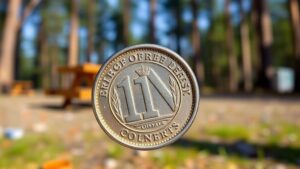Exploring Historic Homesteads for Paper Money Stashes and Glass Relics
Exploring Historic Homesteads for Paper Money Stashes and Glass Relics
The allure of historic homesteads goes beyond their architectural beauty and serene settings; these sites often serve as treasure troves filled with hidden histories. Among the various artifacts that can be uncovered, two of the most intriguing are paper money stashes and glass relics. This article delves into the history, significance, and methods for exploring these historic locations, providing you with a roadmap for uncovering their buried stories.
The Significance of Historic Homesteads
Historic homesteads are often emblematic of the cultural and social fabric of their times. serve as a window into the past, revealing the lives of the families who inhabited them, their economic circumstances, and their day-to-day activities. According to the National Trust for Historic Preservation, there are over 87,000 listings in the National Register of Historic Places, many of which include homesteads that are ripe for exploration. Not only do these sites tell personal stories, but they also encapsulate broader historical movements, such as westward expansion and immigration patterns.
Understanding Paper Money Stashes
Paper money, much like other forms of currency, can hold significant historical and financial value. Stashes found in homesteads often date back to times of economic turbulence or personal hardship, revealing insights into the lives of previous residents. For example, during the Great Depression, families often hoarded cash due to the uncertainty of banks. In other cases, landowners may have hidden money as a safeguard against theft or governmental seizure.
- Historical Context: Economic crises and their impact on currency handling.
- Case Study: The discovery of a $100 bill from the early 1900s in a Kansas farmhouse, which was appraised at $1,500 today.
Finding paper money is not just about the immediate financial gain; it often provides a narrative regarding the socio-economic conditions of the time. For example, the collection of U.S. currency made during different political regimes can reveal shifts in public sentiment and economic strategy, further enriching our understanding of history.
Uncovering Glass Relics
Glass relics, including bottles, jars, and decorative items, often reflect the craftsmanship and aesthetic values of the era in which they were made. The glass industry in America flourished during the 19th century, giving rise to various styles and companies. When exploring homesteads, excavating glass artifacts can provide insights into the daily lives of residents, including their consumption patterns and social rituals.
- Types of Glass Relics: Understanding common glass finds such as insulator bottles, medicine jars, and decorative pieces.
- Case Study: An archeological dig at a 19th-century homestead in Virginia unearthed numerous glass artifacts, revealing trade routes and lifestyle habits.
Also, many glass items represent specific companies or brands, allowing historians to make connections between commercial growth and community development. For example, a glass soda bottle from the early 1900s may elicit discussions about emerging consumer culture and marketing practices during that period.
Methods for Exploration
Successfully discovering paper money stashes and glass relics requires strategic planning and an understanding of both archaeology and history. Here are key methodologies for anyone seeking to explore historic homesteads:
- Research: Begin by reviewing historical documents, maps, and previous excavation reports to gather context about the homestead.
- Site Inspection: Examine the property layout, focusing on areas such as old structures, outbuildings, and known historical events.
- Tools & Technology: Using metal detectors and ground-penetrating radar can pinpoint target areas for deeper exploration.
- Documentation: Maintain detailed records of findings, including photos, sketches, and notes regarding each artifacts location and condition.
Practical Considerations
Before embarking on an exploration venture, it is crucial to consider legal and ethical implications. Many states have regulations governing the excavation of historic sites, often requiring permits or permissions from property owners. Respect for the sites integrity and the preservation of artifacts is paramount; these items tell stories that should be honored, not exploited.
Conclusion
Exploring historic homesteads for paper money stashes and glass relics offers a fascinating glimpse into the past. Collectively, these discoveries underscore the complexities of human behavior, economic struggle, and cultural identity. Whether for personal enrichment or academic study, the pursuit of these artifacts can yield both tangible and intangible rewards that enhance our understanding of history.
As you plan your exploration, remember to approach these sites with respect and curiosity. The stories they hold may surprise you, revealing a heritage worth preserving for future generations.


